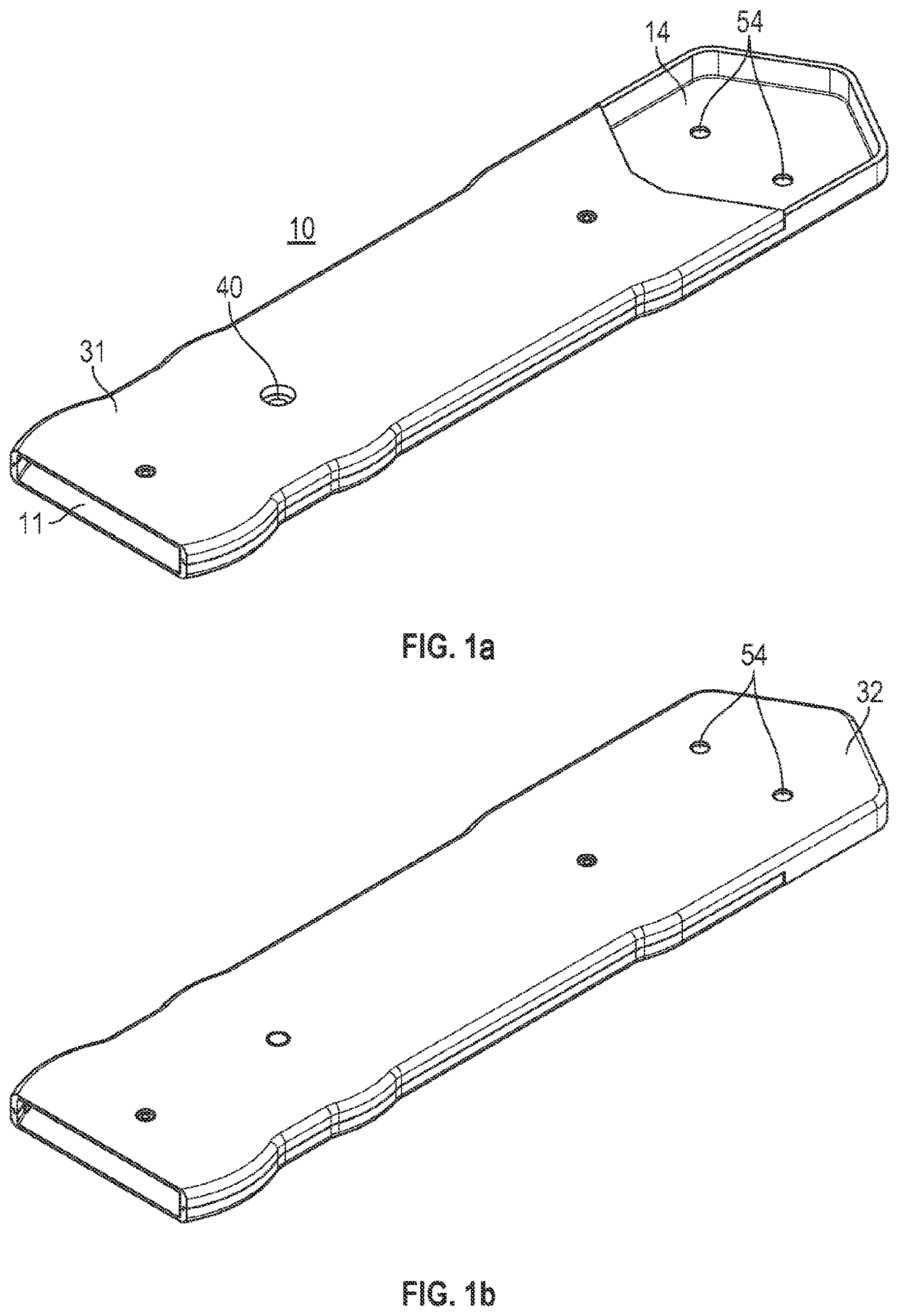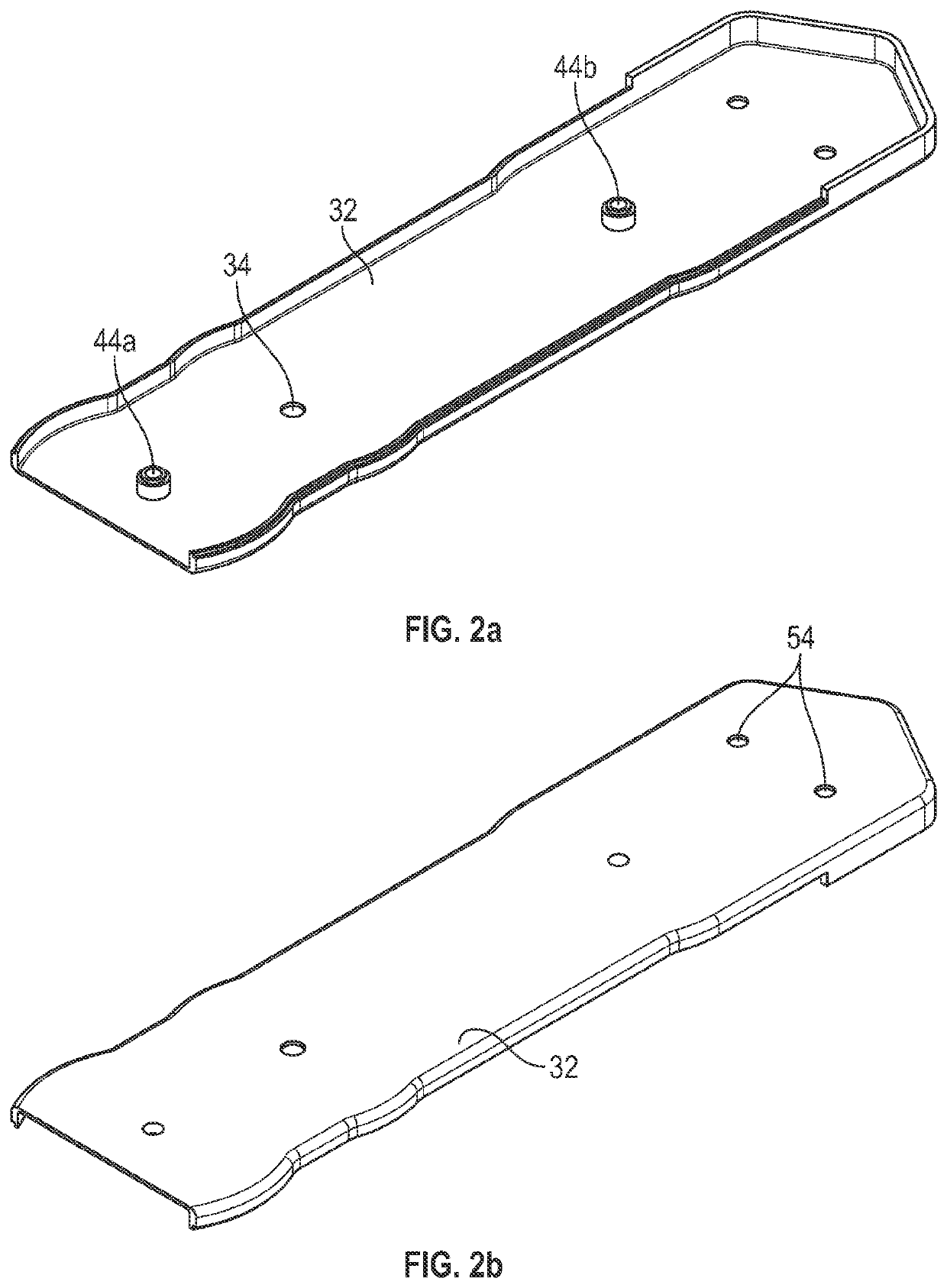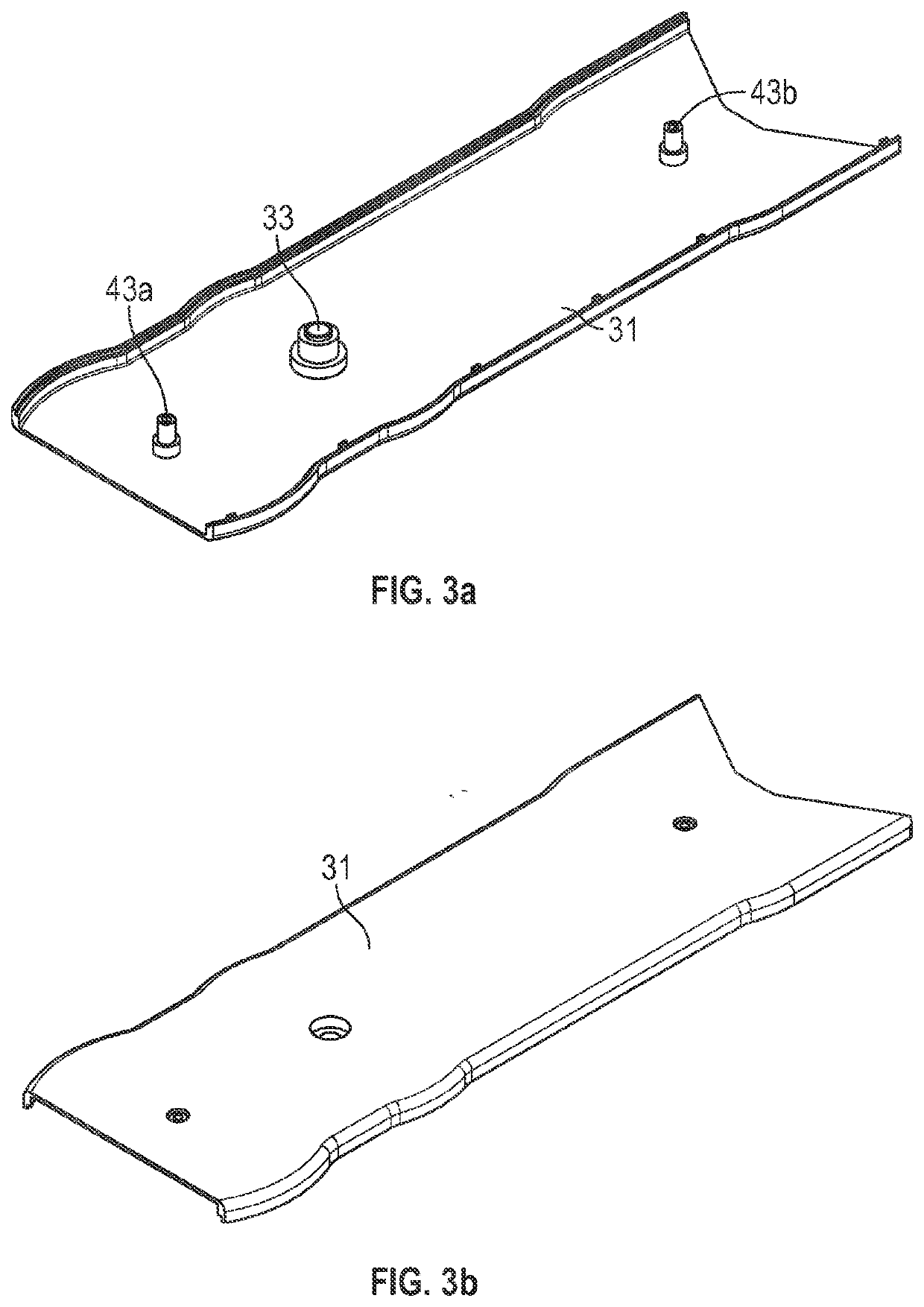Anti-Predator Device for Beehive
a technology of anti-predator and beehive, which is applied in the field of anti-predator device for beehives, can solve the problems of reducing the entrance size, creating significant economic costs for the bee industry in general, and wasps entering the beehive, so as to reduce the incidence of beehive robbing, increase the volume of bee traffic, and increase the attack of host bees.
- Summary
- Abstract
- Description
- Claims
- Application Information
AI Technical Summary
Benefits of technology
Problems solved by technology
Method used
Image
Examples
first embodiment
[0109]Referring in more detail to the figures, FIGS. 1a, 1b, 2a, 2b, 3a and 3b depict the invention (10) having an upper tunnel portion (31) and a lower tunnel portion (32). The tunnel has an entrance (11) and an exit (14). When the apparatus is in position on the bottom board of a beehive, the entrance (11) is positioned external to the beehive and the exit (14) internal to the hive. The exit (14) is in the upper surface of the apparatus to force pests attempting to enter the hive upwards into the cluster. The outer wall of the tunnel entrance (11) comprises a circular contour as a frusto-circular plan form (52) which is outwardly convex and arranged on opposing sidewalls. The tunnel further has drainage holes (54). The upper tunnel portion (31) and lower tunnel portion (32) are secured together by engaging a boss (33) in the upper tunnel portion (31) and a complementary aperture (34) in the lower tunnel portion (32). Once the boss (33) and aperture (34) are engaged, a nail or scre...
second embodiment
[0111]FIGS. 5, 6a and 6b show the invention (110) having a tunnel and comprising an upper tunnel portion (131) and a lower tunnel portion (132). The tunnel has an entrance (111) and an exit (114). The upper tunnel portion (131) and lower tunnel portion (132) have a flare (112) at the entrance (111), this allows the apparatus to be pivoted whilst maintaining a seal between the apparatus and the entrance to the beehive. The upper tunnel portion (131) and lower tunnel portion (132) are secured together by engaging a boss (133) in the upper tunnel portion (131) and a complementary aperture (134) in the lower tunnel portion (132). Once the boss (133) and aperture (134) are engaged, a nail or screw may be passed through the channel (140) formed by the engaged boss (133) and aperture (134) to fix the apparatus to the base of a beehive. This embodiment also depicts additional structure points comprising a structure boss (143a, b) in the upper tunnel portion (131) and a structure aperture (1...
third embodiment
[0112]FIG. 7 depicts the invention (210) having a tunnel, upper tunnel portion (231) and lower tunnel portion (232). The centre of the tunnel comprises a circular contour as a frusto-circular plan form (256) about the channel (240). The channel (240) blocks the centre of the tunnel, therefore the frusto-circular section (256) allows additional space for bees to pass around the channel (240) within the tunnel. FIG. 7 further shows how the apparatus can be rotated according to the arrows (257), whilst maintaining a seal between the flare (212) at the entrance (211) to the tunnel and the entrance to the beehive.
PUM
 Login to View More
Login to View More Abstract
Description
Claims
Application Information
 Login to View More
Login to View More - R&D
- Intellectual Property
- Life Sciences
- Materials
- Tech Scout
- Unparalleled Data Quality
- Higher Quality Content
- 60% Fewer Hallucinations
Browse by: Latest US Patents, China's latest patents, Technical Efficacy Thesaurus, Application Domain, Technology Topic, Popular Technical Reports.
© 2025 PatSnap. All rights reserved.Legal|Privacy policy|Modern Slavery Act Transparency Statement|Sitemap|About US| Contact US: help@patsnap.com



